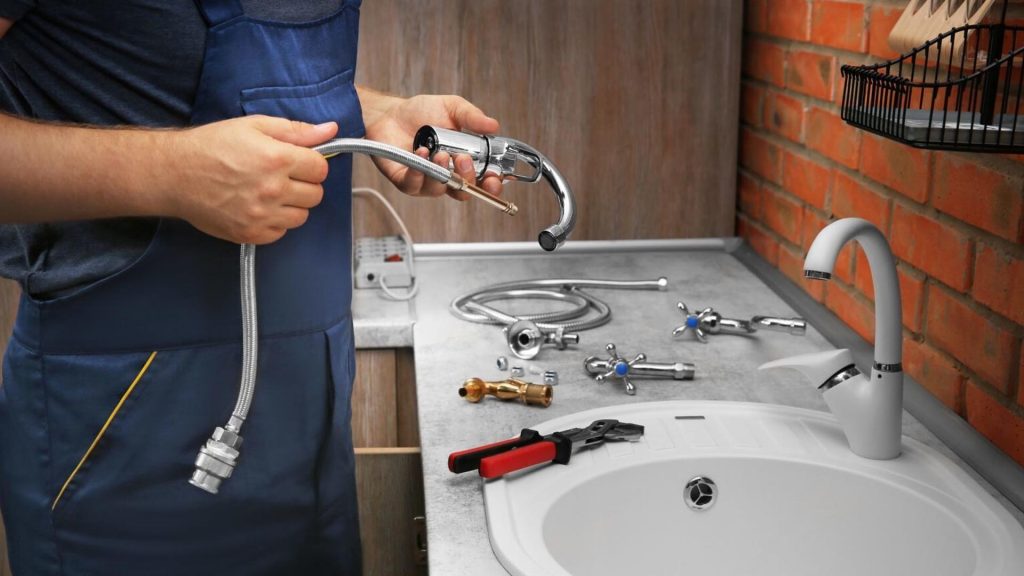Plumbing problems can be a homeowner’s worst nightmare. From leaky faucets to clogged drains, these issues can interrupt your daily life & cause significant inconvenience. In this blog, we will discuss seven common plumbing problems that many people encounter and provide you with practical tips on how to diagnose them. By understanding the root causes of these issues, you’ll be better equipped to address them effectively.
Plumbing problems are not uncommon in households, and they can arise due to various reasons. Being able to diagnose these issues correctly is the first step toward finding the right solution. Let’s delve into the seven most common plumbing problems and their diagnostic methods.
Low Water Pressure
Symptoms: Faucets and showerheads produce weak water flow.
Possible Causes
- Sediment buildup in pipes.
- Faulty pressure regulator.
- Leaks in the plumbing system.
- Municipal water supply issues.
Diagnosis
To diagnose low water pressure, start by checking if the problem is isolated to a specific faucet or affects the entire house. If it’s limited to one faucet, it may indicate a clog or mineral buildup and If the issue is widespread, contact your water supplier to check for any disruptions in the water mains. If necessary, consult a professional plumber to identify and address the underlying cause.
Leaky Faucets
Symptoms: Dripping or continuously leaking faucets.
Possible Causes
- Worn-out seals or gaskets.
- Loose or damaged parts.
- Corroded valve seat.
- High water pressure.
Diagnosis
Diagnosing a leaky faucet is relatively straightforward. Check the affected faucet for any visible signs of wear or damage. Turn off the water supply to the faucet, disassemble it, and inspect the components. Look for worn-out seals or gaskets and replace them if necessary. If you’re unsure or the problem persists, it’s best to consult a plumber.
Clogged Drains
Symptoms: Slow drainage or complete blockage.
Possible Causes
- Accumulated debris and food particles.
- Hair buildup.
- Grease or oil residue.
- Tree roots infiltrating sewer lines.
Diagnosis
To diagnose a clogged drain, start by using a plunger to create suction and dislodge any minor obstructions. If that doesn’t work, try using a drain snake to remove deeper clogs. For severe blockages or recurring issues, it’s advisable to seek professional help. They can employ specialized tools, such as hydro-jetting, to clear the drain effectively.
Running Toilet
Symptoms: Toilet continuously running or refilling intermittently.
Possible Causes
- Faulty flapper valve.
- Maladjusted fill valve.
- Damaged float mechanism.
- Sediment buildup in the tank.
Diagnosis
To diagnose a running toilet, remove the toilet tank lid and inspect the internal components. Check if the flapper valve is sealing properly and adjust the fill valve if necessary. Clean any sediment buildup in the tank. If the issue persists, it may be best to consult a plumber, as they can identify and resolve more complex problems.
Water Heater Issues
Symptoms: Insufficient hot water, strange noises, or water leaks around the heater.
Possible Causes
- Sediment buildup in the tank.
- Malfunctioning thermostat.
- Faulty heating element.
- Corrosion in the tank.
Diagnosis
To diagnose water heater issues, start by checking if the circuit breaker hasn’t tripped and that the pilot light is lit (for gas heaters). If these are fine, examine the tank for any visible signs of leaks or corrosion. Flushing the tank to remove sediment can help improve performance. However, if the problem persists, it’s recommended to call a professional plumber to inspect and repair the water heater.
Frozen Pipes
Symptoms: Little to no water flow from faucets during cold weather.
Possible Causes
- Exposed pipes in unheated areas.
- Inadequate insulation.
- Drastic temperature drops.
Diagnosis
To diagnose frozen pipes, check if other faucets in the house are producing water flow. If the issue is limited to a specific area, it’s likely that the pipes there have frozen. Inspect the affected pipes for signs of frost or bulging. Safely thaw the pipes using a hairdryer or warm towels. It’s crucial to handle frozen pipes carefully to prevent them from bursting. In severe cases or if you’re unsure, consult a professional plumber.
Sewer Line Problems
Symptoms: Multiple drain clogs, foul odors, and gurgling sounds.
Possible Causes
- Tree root intrusion.
- Accumulated debris and grease.
- Damaged or collapsed pipes.
- Bellied pipes cause a sagging effect.
Diagnosis
Diagnosing sewer line problems requires professional expertise and specialized equipment. If you notice persistent drain clogs, foul odors, or strange noises, it’s crucial to contact a licensed plumber. They will perform a sewer line inspection using techniques like video camera inspection to identify the exact location and nature of the problem.
Conclusion
Plumbing problems can be frustrating, but with the right knowledge, you can diagnose them accurately. By understanding the symptoms, possible causes, and diagnostic methods, you can tackle these common plumbing issues more effectively. Remember, for complex problems or if you’re uncertain, it’s always best to consult a professional plumber who can provide expert assistance.










